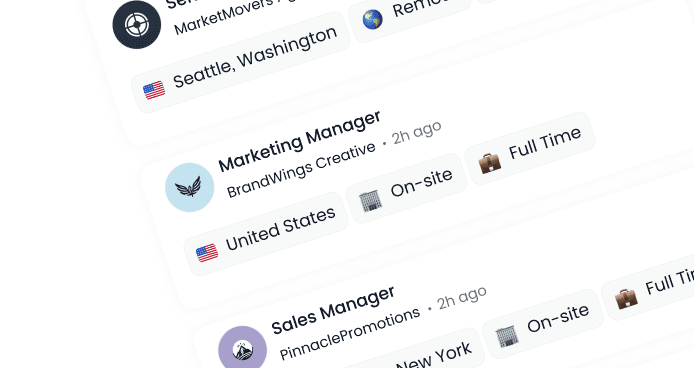Forget Borders. AI Job Boards Just Made Hiring Global
Published:
November 6, 2025
All
AI Recruitment
Recruiting Tips
Employer Branding
Candidate Experience
Workforce Planning
Video Interviews
Talent has no borders. AI just made sure your hiring doesn’t either.
Key takeaways
Traditional job boards are inefficient for global or cross-border hiring. They struggle with localization, reach, and manual screening.
AI job boards use skills-first matching, multilingual recruitment, and automation to enable remote hiring at scale.
Built-in compliance checks and integrations make cross-border hiring practical — not just aspirational.
Platforms like DigitalHire help organizations build distributed teams without compromising speed or candidate quality.
The Shift: Why AI Job Boards Are Redefining Global Hiring
Ever wondered why you can post a job in one country and receive a flood of suitable applicants from three others — often overnight?
That’s because AI job boards are reshaping the hiring funnel, unlocking access to a truly global, borderless talent market.
Consider this: over 50% of the world’s workforce (about 2 billion people) work in informal jobs — a massive, underutilized pool of talent that’s finally coming into visibility through digital platforms.
Since 2019, the percentage of remote roles has skyrocketed worldwide. Instead of hiring locally, organizations now reach candidates across multiple countries, enabling access to talent that was previously out of reach.
Why Legacy Job Boards Don’t Work for Global Hiring
Traditional job boards were built for domestic markets — keyword searches, basic templates, limited languages, and minimal cross-border sourcing capabilities.
When it comes to international hiring, these gaps grow even wider:
Localization Issues: Job titles, skill categories, and salaries vary across regions. Keywords effective in one country may not match candidate profiles elsewhere.
Resume Limitations: Resumes often fail to show soft skills, adaptability, or cultural fit — all vital for cross-border and remote teams.
Manual Overheads: Screening, scheduling, and translation checks slow down recruitment when managing global applicant volumes.
Compliance Blind Spots: Tax laws, contractor classifications, and data privacy regulations differ by country — creating risks if overlooked.

How AI Job Boards Break the Borders
Skills-Based Matching (Beyond Keywords)
AI-driven platforms go beyond keyword searches. They build skills graphs that map transferable competencies and contextual signals — from portfolios and video responses to behavioral data.
The result?
Better recall (finding more relevant candidates) and stronger precision (fewer false positives), especially when hiring across borders.
Multilingual Recruitment That Actually Scales
Modern AI job boards feature machine-assisted job translations, localized job pages, and standardized terminologyacross regions (e.g., “Account Executive” vs. “Client Manager”).
Automated language prompts and proficiency checks allow recruiters to interact with candidates in their preferred language — ensuring inclusivity and a seamless candidate experience worldwide.
Built-In Support for Remote and Distributed Teams
From intake through to offer, AI streamlines repetitive tasks - these include: screening questions, asynchronous video interviews, cross-cultural factor time zone scheduling, and well-structured scoring rubrics. Shortlists are completed faster; Hiring Managers get richer signals (sample work, video context, skills scores). That's important when you can have global teams across several countries; you can't let your team lose steam by carrying out late-night calls.
Built-In Talent Mobility
AI doesn’t just source external candidates — it also identifies internal talent across regions by matching skills to open roles.
This supports workforce reallocation in large enterprises and gives startups flexibility to scale quickly as they enter new markets.
Guardrails for Cross-Border Compliance
Cross-border hiring involves complex data privacy, classification, and right-to-work checks.
AI job boards increasingly integrate with Employer-of-Record (EOR) services, payment processors, and ID verification tools.
They provide jurisdiction-specific alerts (e.g., required tax documents, work authorization).
Under the EU AI Act, transparency and documentation will become critical — making compliance a shared responsibility between recruiters and AI vendors.
From Posting to Placement Across Borders
Write Roles for Skills, Not Passports
Use outcome-driven language (“own APAC pipeline growth”) and skills (“HubSpot, SDR coaching, B2B SaaS discovery”) instead of location-based requirements.
Let AI highlight adjacent and transferable talent.
Localize Once, Distribute Everywhere
Leverage multilingual templates and region-specific job metadata (currency, benefits, working hours). Activate automatic translations where appropriate and review critical phrases for nuance.
Standardize Signals with Structure
Adopt structured screening methods — consistent questions, scoring rubrics, and calibrated thresholds.
Use asynchronous video to capture qualitative insights without time zone constraints.
Automate Compliance Early
Connect identity, EOR/payroll, and background-check partners in the workflow. Trigger document requests and jurisdiction reminders as soon as a candidate advances stage.
Close the Loop with Data
Track time-to-shortlist, pass-through rates by region, and quality-of-hire proxies (ramp time, retention). Use these insights to improve your job templates and hiring efficiency over time.
In Conclusion
Global hiring is no longer about “posting everywhere and hoping for the best.”
It’s about building a skills-first, multilingual, and compliance-aware hiring funnel that scales with your growth.
AI job boards make this possible — transforming complex, cross-country workflows into structured, data-rich processes.
With platforms like DigitalHire, you can build distributed teams faster, smarter, and without borders — all while maintaining consistency, fairness, and speed.
FAQs
Do AI job boards replace our ATS?
Not necessarily. Most integrate with ATS/HRIS systems to enrich matching, reduce manual work, and sync structured data.
How do we avoid bias at scale?
Use structured questions, consistent scoring, and calibration. Choose platforms offering transparency and audit trails.
What about legal risks when hiring internationally?
Opt for platforms that integrate with EOR/payroll providers and flag jurisdiction-specific requirements early in the process.
Can AI help with language barriers?
Yes — via multilingual translation, localization, and language-aware prompts. Human review remains vital for nuance.
How do we measure success?
Track time-to-shortlist, offer rates by region, candidate satisfaction (NPS), and post-hire outcomes. Use these metrics to refine your global hiring strategy.
FREE JOB POST
Looking to fill a position quickly? Post your job for free and reach top talent today!




